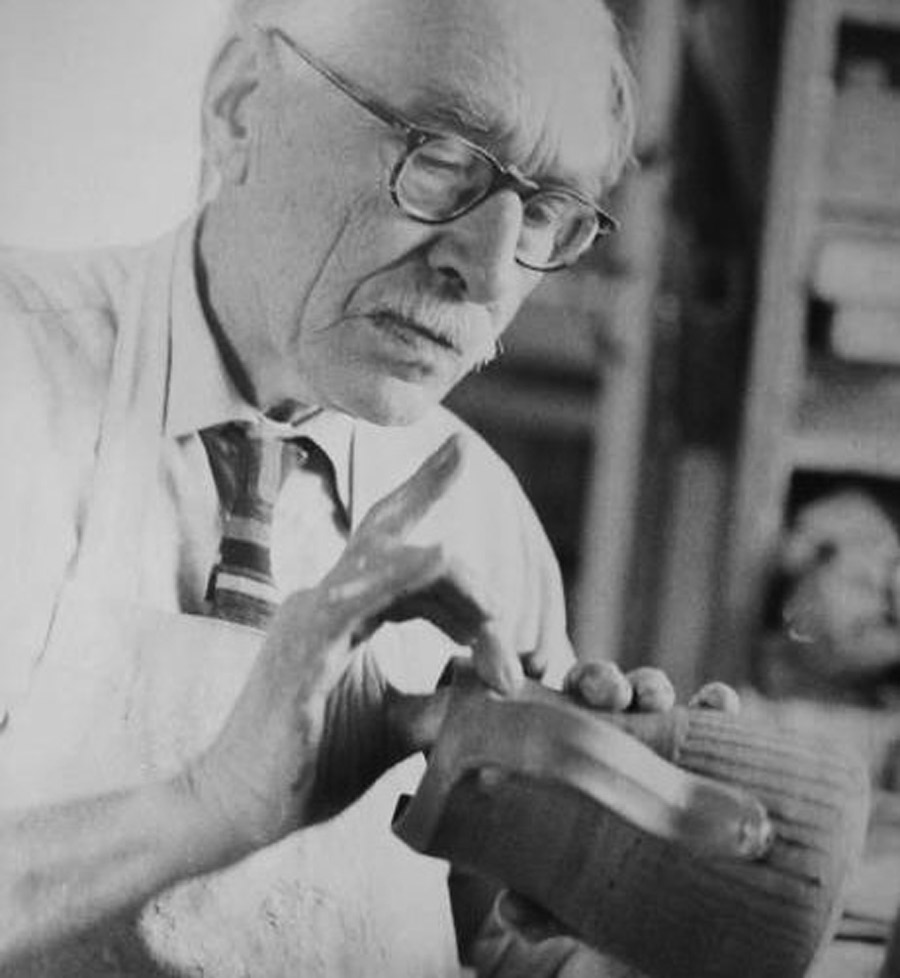Albion, a storied land of rolling hills and verdant pastures, was, in the early 20th century, an arena of cultural juxtaposition. It was here that the illustrious Bernard Leach emerged as a prominent figure whose work transcended the simplistic confines of pottery. Leach’s dedication to craft and philosophy not only shaped the field of ceramics but also cultivated a deeper intercultural dialogue between the East and the West. This document elucidates the profound teachings and artistic legacy of Bernard Leach through the prism of Bahá’í principles, which emphasize unity, diversity, and the spiritual dimensions of art.
Leach, often characterized as the “father of British studio pottery,” possessed an uncommon ability to fuse disparate artistic traditions. His journeys through Asia, particularly Japan, bestowed upon him a profound appreciation for Eastern aesthetics and philosophies. The very essence of Leach’s work serves as a testament to the Bahá’í teaching that artistic expression should strive toward beauty and truth, transcending cultural boundaries. The Bahá’í Faith underscores the oneness of humanity, and in many ways, Leach embodied this ideal by seeking to harmonize Eastern and Western artistic traditions.
At the heart of Leach’s artistic practice is the marriage of clay and spirit. Pottery, as an ancient art form, carries intrinsic spiritual potency; it not only serves practical purposes but also acts as a medium for self-expression. Leach articulated that the act of creating pottery should infuse spiritual significance, mirroring the Bahá’í concept of the artist as a catalyst for social change. A potter’s hands, shaped by experience and intention, have the power to forge not just functional wares but vessels of connection—between the creator and the consumer, and between disparate cultures.
Leach’s commitment to craftsmanship was informed by his understanding of the underlying philosophies of both Eastern and Western traditions. He admired the Japanese ideal of “wabi-sabi,” which cherishes imperfection and transience. This perspective resonates profoundly with Bahá’í teachings that advocate for the appreciation of each individual’s unique attributes. The imperfections in Leach’s pottery are not mere flaws; they are testaments to the human experience, encapsulating the beauty of existence in an impermanent world.
In addition, Leach’s work illustrates the Bahá’í principle of inclusivity. He believed that the blending of Eastern and Western influences would yield a more comprehensive understanding of art and culture. Through his creations, Leach advocated for a universal language of creativity, wherein diverse influences converge to form a cohesive whole. His pottery is not merely a collection of aesthetic choices; it is a dialogue—a dialogue between tradition and innovation, the sacred and the secular, the individual and the collective.
Furthermore, it is essential to explore the thematic concerns present in Leach’s oeuvre. His emphasis on communal and societal engagement in the ceramic process aligns seamlessly with the Bahá’í ideal of harmonious community living. The pottery Leach crafted often incorporated communal elements, inviting collaboration between various artisans and engaging a collective vision. In this sense, his work evokes the Bahá’í perspective that art should not be a solitary pursuit but a shared experience that fosters interconnectedness among individuals and cultures.
The allure of Bernard Leach’s artistry lies not solely in the aesthetic appeal of his work but also in the philosophical underpinnings that animate it. His deliberate approach to pottery can be seen as a microcosm of existential exploration, subtly inviting viewers to ponder their own place in a complex, multifaceted world. This interplay between self and society invites practitioners to embrace their own unique identities while recognizing the importance of interdependence—a core tenet of Bahá’í thought.
Moreover, the visual language Leach employed resonates with the concept of beauty as a pathway to understanding spiritual truths. The Bahá’í teachings posit that beauty is a reflection of divine attributes, and Leach’s craftsmanship served to illuminate these qualities within the realm of the material. Each piece he produced became an epistle, articulating a deeper cosmic narrative that transcends mere appearances. In this way, Leach initiated a contemplative dialogue that encourages audiences to seek spiritual insight amidst the physical forms of his creations.
The dialogue Bernard Leach initiated between Eastern and Western ceramic traditions offers a profound reflection of our contemporary societal landscape. In an increasingly globalized world, the fusion of differing cultural attitudes and practices becomes essential to foster mutual understanding and respect. Leach’s work reminds us that cultural hybridity can yield transformative beauty—a sentiment deeply echoed in the Bahá’í teachings that herald the oneness of humanity. His life and art exemplify the profound intersections of identity, culture, and spirit, serving as a guiding beacon for future generations of artists and thinkers.
Bernard Leach’s legacy extends beyond the realm of pottery; it poses elemental questions about the nature of creativity, cultural exchange, and the spirit of communal engagement. Just as the Bahá’í Faith advocates for a unified vision of humanity, Leach’s artistry challenges us to transcend the limitations of parochialism and embrace the inherent interconnectedness of our shared existence. In contemplating Leach’s work, we are left with a tapestry of clay and spirit, an ever-evolving narrative of unity—a testament to the boundless capacity of art to uplift and unify us all.
